Powerlifting Knee Sleeves Explained: Benefits & Tips
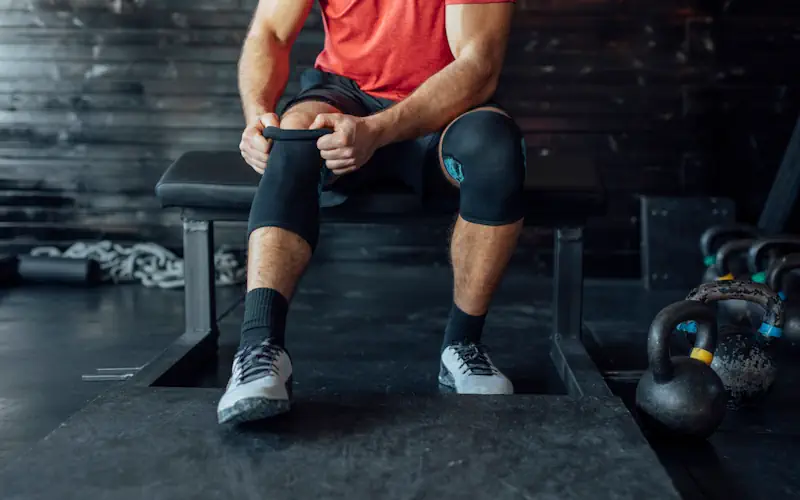
What's In This Article
- Key Highlights
- Introduction
- Powerlifting Knee Sleeves Explained
- How Knee Sleeves Enhance Powerlifting Performance
- Pros and Cons of Wearing Knee Sleeves in Powerlifting
- Practical Tips for Using Knee Sleeves Effectively
- Comparative Analysis of Knee Sleeves Versus Other Supportive Gear
- Expert Recommendations on Knee Sleeves for First-Time Buyers
- Conclusion
- Frequently Asked Questions
- References
- Further Reading
Key Highlights
- Knee sleeves provide support, compression, and warmth to the joint during powerlifting exercises.
- They improve squat performance by potential energy and reducing pain and discomfort.
- sleeves come in different thicknesses and materials, with neoprene being the most popular choice.
- Proper sizing and fitting are important to get the maximum benefit from sleeves.
- Sleeves are not a substitute for proper form and technique and should not be relied upon as a crutch.
- It is important to care for them by washing them regularly and following the manufacturer's instructions.
Introduction
Knee sleeves have become a popular accessory among powerlifters because they provide support, compression, and warmth to the joint during intense workouts. Whether you're a seasoned powerlifter or just getting started, understanding the benefits and proper usage is crucial for maximizing your performance and preventing injuries. This blog will explore the importance of this kit in powerlifting, the different types and materials available, and provide practical tips for using them effectively.
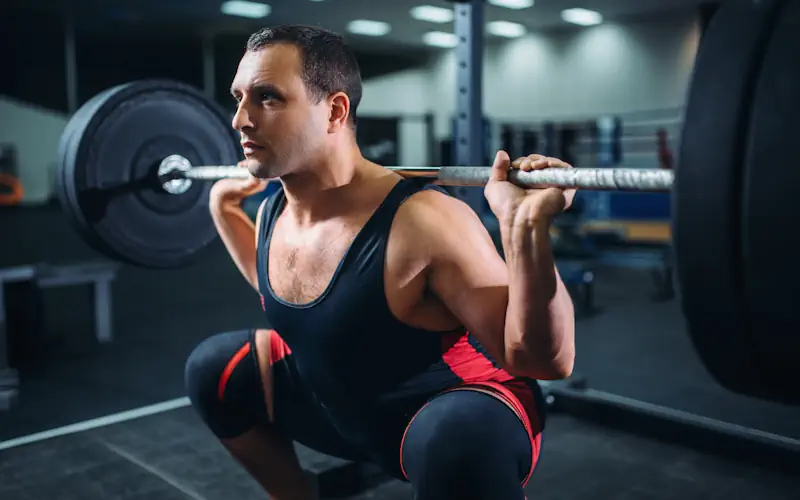
Powerlifting Knee Sleeves Explained
Knee sleeves are compression garments worn around the joint during powerlifting exercises. They are made from materials like neoprene, nylon, and spandex, which provide elasticity, support, and heat retention to the joint. The compression promotes increased blood flow to the area, which can help improve performance and reduce the risk of injury during strength training.
One of the key benefits is their ability to provide extra support to the knee joint during dynamic movements like squats, the snatch, and the clean and jerk. By providing compression and stability, sleeves help to maintain proper alignment and reduce the risk of injury. They also help to increase proprioception, which is the body's awareness of its position and movements in space. This increased proprioception can improve technique and form during powerlifting exercises.
Research has shown that wearing them during strength training exercises can enhance blood flow and oxygen delivery to the muscles, improving muscle performance and reducing fatigue. The compression provided by sleeves also helps to decrease muscle vibration, which can further enhance muscle function and reduce the risk of injury.
In addition to their role in injury prevention, sleeves can help alleviate pain and discomfort during powerlifting exercises. The compression and warmth can help to reduce inflammation and promote faster recovery. This can be especially beneficial for powerlifters who may experience pain or discomfort due to lifting heavy weights and the intense training involved in the sport.
Overall, knee sleeves play an important role in powerlifting by providing joint support, compression, and warmth. They enhance blood flow, improve muscle performance, and reduce the risk of injury, making them an essential accessory for any powerlifter.
The Role of Knee Sleeves in Athlete Safety and Performance
Knee sleeves support powerlifters and Olympic weightlifters during dynamic movements such as squats and deadlifts. The compression and stability they offer help maintain proper alignment and reduce the risk of injury. By supporting the joint, sleeves help prevent excessive stress and strain on the ligaments and tendons, which can lead to injuries like sprains and strains. They also help to stabilize the joint during heavy lifts, reducing the risk of the knee collapsing or buckling under the weight. Olympic weightlifters often perform explosive and heavy lifts and rely on sleeves to protect their knees and improve their performance.
In addition to their injury prevention role, sleeves can enhance performance by improving proprioception. Proprioception is the body's ability to sense its position and movement in space. Compression sleeves help increase proprioception, allowing powerlifters to better control their movements and maintain proper form during lifts. By improving proprioception, sleeves can help powerlifters lift heavier weights with better technique and reduce the risk of injury.
Different Types of Knee Sleeves and Their Unique Benefits
Different types are available in the market, each with its unique benefits. One of the most popular types is the neoprene sleeve, known for its elasticity, heat retention, and durability. Neoprene sleeves provide excellent compression and support, making them ideal for powerlifting. They also help keep the joint warm, improving blood flow and reducing the risk of injury.
Another type is the nylon knee sleeve, which is lightweight and breathable. Nylon sleeves offer good compression and support, making them suitable for powerlifters who prefer a lighter option. They are also easy to clean and maintain.
Thicker versions, such as 7mm sleeves, provide maximum compression and support. Powerlifters who lift heavier weights often use these thicker sleeves and need extra stability and protection for their joints. Thicker versions are also beneficial for powerlifters with existing knee issues or injuries.
Neoprene sleeves are the only type of knee sleeves sanctioned in major powerlifting competitions by federations such as the International Powerlifting Federation (IPF) and the World Powerlifting Congress (WPC). These sleeves are designed to provide support and warmth to the joints during heavy lifts without artificially enhancing lifting performance, as might be the case with more rigid, supportive devices like knee wraps (which are allowed in some federations). Using neoprene, a type of synthetic rubber, offers the dual benefits of compression and flexibility, helping to stabilize the joint and potentially reduce injury risk. This allowance reflects a commitment to maintaining safety while ensuring a level playing field, where athlete performance is primarily a function of skill, strength, and strategy rather than equipment advantages recognized by organizations like the International Powerlifting Federation and International Weightlifting Federation.
When choosing, it is important to consider the material and thickness that best suits your needs and preferences. It is recommended to try different types and sizes to find the one that provides the best combination of comfort, support, and performance enhancement for you.
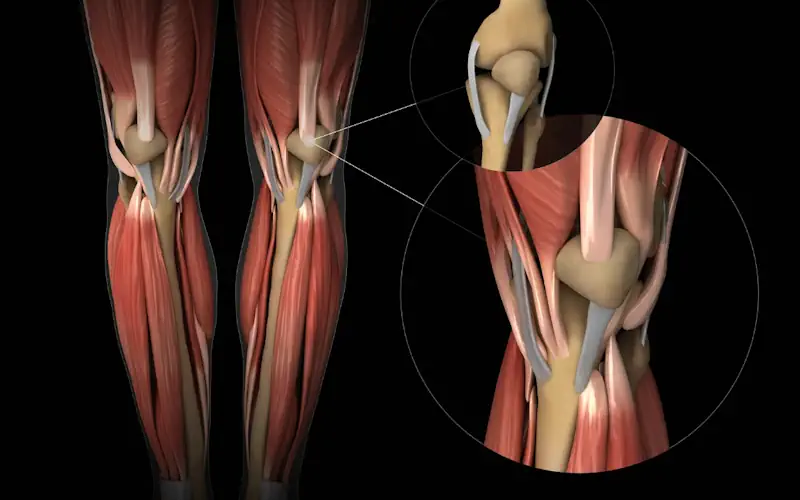
How Knee Sleeves Enhance Powerlifting Performance
Knee sleeves have been shown to enhance powerlifting performance in several ways. First, they provide extra support and stability to the joint, allowing powerlifters to lift heavier weights with better control and form. Second, they increase blood flow and oxygen delivery to the muscles, improving muscle performance and reducing fatigue. Finally, they can improve proprioception, the body's awareness of its position and movements in space, enhancing technique and form during lifts.
Insights from the Study by Lake, J. P., & Lauder, M. A. (2012)
A study conducted by Lake and Lauder in 2012 explored the effects of knee sleeves on squat performance. The study found that wearing sleeves had a positive impact on squat performance, particularly in the bottom position of the squat. The researchers observed that knee sleeves allowed lifters to generate more power and momentum as they ascended from the bottom position, resulting in improved squat performance. The researchers attributed this improvement to the potential energy stored in the sleeves during the descent phase of the back squat. This study provides valuable insights from Lake, J. P., & Lauder, M. A. (2012) into the benefits for powerlifters, highlighting their role in enhancing squat performance and overall powerlifting performance.
Analysis of Kulig, K., Andrews, J. G., & Hay, J. G. (1984) Research on Human Strength Curves
In a study conducted by Kulig, Andrews, and Hay in 1984, researchers investigated the strength curves of the joint during different ranges of motion. They found that the joint's strength varies throughout its range of motion, with the most significant changes occurring during knee flexion (knee bending). The researchers concluded that sleeves can help optimize the strength curve of the joint by providing compression and support, particularly during the bottom position of the squat, where the flexion is greatest. This analysis highlights the importance of sleeves in balancing the strength curve of the joint, allowing powerlifters to maximize their performance during squats and other exercises.
 contact us via email for personalized recommendations and advice.
contact us via email for personalized recommendations and advice.
Selecting the Right Material for Optimal Support and Comfort
When selecting, it is important to consider the material that best suits your needs and preferences. Neoprenes are known for their excellent compression, support, and warmth. They are suitable for powerlifters who require maximum stability and protection for their joints. Nylon sleeves provide good compression and support and are lightweight and breathable, making them a popular choice for powerlifters who prefer a lighter option. Spandex sleeves offer excellent elasticity and a softer feel, providing moderate compression and support. They are suitable for powerlifters who prioritize comfort and flexibility. The choice of material ultimately depends on your personal preferences, the level of support you require, and the specific demands of your training. Experimenting with different materials can help you find the version that offers the optimal balance of support and comfort for your powerlifting needs.
Design Features That Maximize Performance and Protection
One important design feature is the compression provided by the knee sleeves. Compression helps increase blood flow, reduce muscle vibration, and support the joint, enhancing performance and reducing the risk of injury. The snug fit ensures maximum compression and support, allowing powerlifters to lift heavier weights with better control and stability. Another design feature is the proprioceptive feedback provided. Proprioception refers to the body's awareness of its position and movement in space. The compression and stability enhance proprioception, allowing powerlifters to control their movements better and maintain proper form during lifts. Additionally, design features such as reinforced stitching, silicone grip bands, and contoured shapes enhance functionality, providing additional stability, support, and protection to the joint during powerlifting exercises.
Design
Pros and Cons of Wearing Knee Sleeves in Powerlifting
While they offer many benefits to powerlifters, it is important to consider the pros and cons before incorporating them into your training. The advantages of wearing sleeves include increased support, warmth, and pain reduction, making them a useful tool for athletes recovering from knee surgery. They can provide added stability to the joint, reduce the risk of injury, and improve overall squat performance. However, there are also considerations to keep in mind. Sleeves may not benefit everyone, especially those who experience discomfort or inflammation wearing them. It is important to find the right fit and use it to enhance performance rather than relying on it as a crutch for poor form or technique.
Advantages:
Knee sleeves offer several advantages to powerlifters, including:
- Support: Provide added support and stability to the joint during heavy lifts, reducing the risk of injury.
- Warmth: The compression and heat retention properties help increase blood flow and joint mobility, reducing the risk of injury and improving overall squat performance.
- Pain Reduction: Can help alleviate knee pain and discomfort during powerlifting exercises, allowing lifters to lift more weight and push themselves harder.
Disadvantages:
While they offer many benefits, there are certain situations where they may not be beneficial or suitable for powerlifters. Some considerations include:
- Discomfort: Some lifters may find them uncomfortable or restrictive, affecting their performance and technique.
- Crutch: They should not be used as a crutch for poor form or technique. Proper form and technique should always be the primary focus during powerlifting exercises.
- Inflammation: If a lifter has knee inflammation or irritation, wearing knee sleeves may exacerbate the problem. It is important to address the underlying issue before using them.
Considerations: When Might Knee Sleeves Not Be Beneficial?
When knee sleeves are too tight, they can restrict blood flow and cause discomfort. If not worn properly, they may provide a false sense of security, leading to improper lifting techniques. Overreliance on them may hinder natural strength development.
and Functionality'>
Practical Tips for Using Knee Sleeves Effectively
To ensure maximum benefit, choosing the right size and ensuring proper fitting is important. Here are some tips for correct sizing and fitting:
- Measure your knee circumference accurately using a ruler or string, following the manufacturer's guidelines for sizing.
- Choose a size that provides a snug fit without cutting off circulation or causing discomfort.
- Ensure that it covers the entire knee joint and kneecap, providing compression and support to the appropriate areas.
- It should be tight enough to provide compression and support but not so tight that it restricts movement or causes discomfort.
- Experiment with different sizes and brands to find the pair that fit you best and provide the optimal balance of support and comfort.
Proper care and maintenance can help prolong their life and ensure optimal performance. Here are some tips for caring for them:
- Wash them regularly according to the manufacturer's guidelines. Hand-washing is recommended to avoid potential damage in a washing machine.
- Use a sport-specific or regular detergent, and avoid using hot water as it can cause the material to break down more quickly.
- Turn them inside out after each use and let them air dry completely before storing them.
- Avoid exposing them to excessive heat or direct sunlight, which can damage the material.
- Replace as needed. Over time, the elasticity and compression may diminish, reducing their effectiveness. If you notice signs of wear and tear, it may be time to invest in a new pair.
Correct Sizing and Fitting for Maximum Benefit
Correct sizing and fitting are crucial to ensure maximum benefit. An ill-fitting pair may restrict blood flow or impede proper knee flexion during dynamic movements, affecting squat performance or risking injury. Powerlifters and athletes should consider thickness and material for optimal support. Proper sizing enhances proprioception and support, aiding in heavy lifts without discomfort. When selecting, attention to detail is essential to prevent unnecessary strain on the knee joint or compromised performance. When properly fitted, they can provide the necessary support and compression for improved overall performance.
Care and Maintenance to Prolong Sleeve Life
Proper care is essential to ensure longevity. Regularly hand washing them in mild detergent and allowing them to air dry can prevent damage. Avoid exposing them to high heat, which can degrade the material. Store them flat or rolled up and never folded to maintain elasticity. Checking for wear and tear regularly is important, as damaged sleeves may compromise support and effectiveness. By following these simple maintenance tips, you can prolong the life of your kit and optimize its performance.
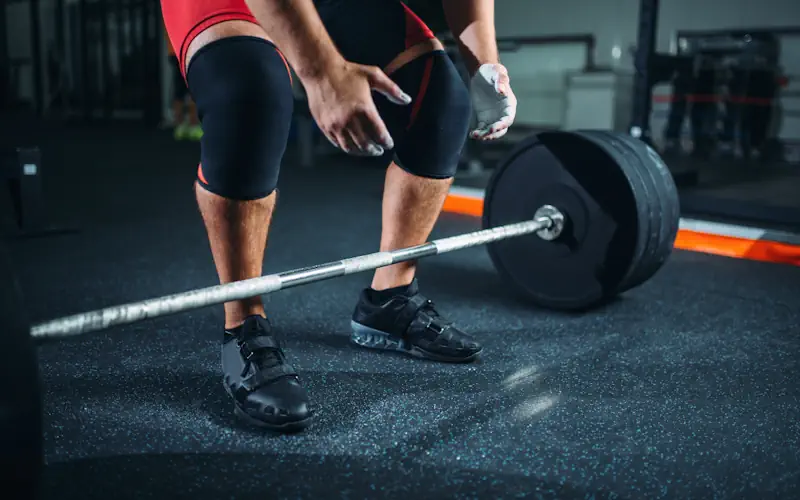
Comparative Analysis of Knee Sleeves Versus Other Supportive Gear
Knee sleeves are just one type of supportive gear that powerlifters can use to enhance their performance and protect their joints. Here is a comparative analysis versus other supportive gear commonly used in powerlifting:
Both knee sleeves and knee wraps offer support and compression to the knee joint, but there are some key differences between the two.
Knee Sleeves | Knee Wraps | |
Support | Provide moderate support | Provide maximum support |
Compression | Offer compression over a larger area | Provide localized compression |
Ease of Use | Easy to put on and take off | Require wrapping and tying |
Adjustability | Provide a consistent level of support | Can be adjusted for different levels of support |
Range of Motion | Allow for a greater range of motion | Can restrict range of motion |
Application | Suitable for everyday training | Used for heavy lifts and competitions |
Knee sleeves and knee braces are supportive gear used to protect the knee joint, but they serve different purposes.
Knee Sleeves | Knee Braces | |
Support | Provide moderate support | Provide maximum support |
Function | Offer compression, warmth, and stability | Provide added support and stability |
Injuries | Not designed for specific injuries | Used for recovery from knee injuries |
Range of Motion | Allow for a greater range of motion | May restrict range of motion |
Application | Suitable for everyday training | Used during post-injury rehabilitation |
Knee Sleeves vs. Knee Wraps: What's Best for You?
Comparing knee sleeves and wraps helps determine the best support for powerlifting. Knee sleeves offer consistent compression and warmth, aiding performance. Wraps provide adjustable tension for heavier lifts but may limit mobility. Choose based on personal needs and lift goals.
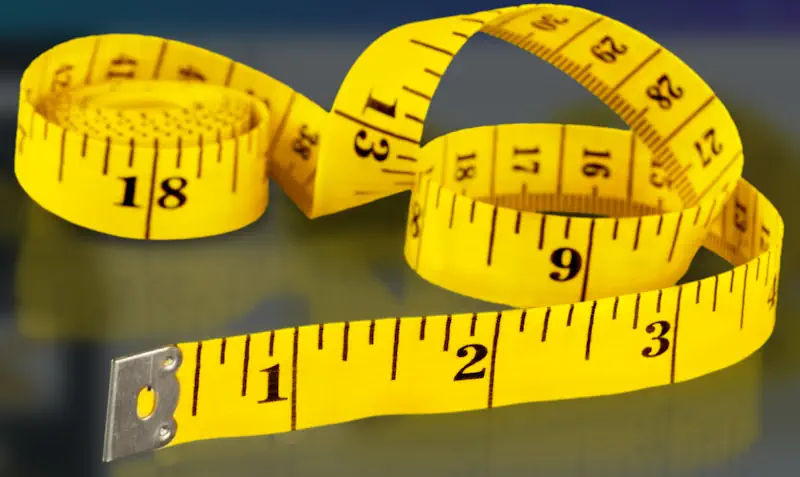
Expert Recommendations on Knee Sleeves for First-Time Buyers
For first-time buyers, investing in the right pair can be overwhelming. Here are some expert recommendations to help you make an informed decision:
Top Picks for Durability, Support, and Comfort
When selecting a top-notch pair for powerlifting, durability, support, and comfort are paramount. Among the top picks favored by athletes and fitness enthusiasts are Gymreapers and SBD Knee Sleeves, considered the best for first-time purchasers. Gymreapers are known for their durable construction and excellent support during heavy lifts, making them a top pick for durability. On the other hand, SBD stands out for its premium quality, providing optimal comfort without compromising stability, making it a top pick for support and comfort. These choices offer functionality and comfort, catering to serious lifters seeking reliable knee support.
What to Look for When Purchasing Knee Sleeves
When purchasing, consider the type of material used for optimal support during dynamic movements like squats and heavy lifts. Look for sleeves that offer maximum support and compression to enhance blood flow and reduce the risk of knee injuries. Ensure the right size for a snug fit, preventing discomfort during activities. Check for durability, thickness, and elasticity to support your powerlifting needs effectively. Prioritize reputable brands known for quality with added support for your training sessions.
Conclusion
In conclusion, understanding the benefits and proper utilization is crucial for enhancing athlete performance and safety. By selecting the right material, design, and fit, athletes can experience improved support, warmth, and pain reduction during powerlifting sessions. It is essential to prioritize correct sizing, maintenance, and care to maximize longevity and effectiveness. Additionally, knowing the distinctions between knee sleeves, wraps, and braces can aid in making informed gear choices. Expert recommendations can guide first-time buyers towards durable, supportive, and comfortable options, ultimately optimizing their powerlifting experience.
Frequently Asked Questions
What are knee sleeves, and how do they benefit powerlifters?
They are compression garments worn around the knee joint that provide support, compression, and warmth. They benefit powerlifters by providing added support and stability during heavy lifts, enhancing performance, and reducing the risk of injury.
How can knee sleeves help improve performance during powerlifting exercises?
They improve performance during powerlifting exercises by providing support, compression, and stability to the knee joint. This helps lifters maintain proper form, lift heavier weights with better control, and reduce the risk of injury.
Are knee sleeves allowed in powerlifting competitions?
They are generally allowed in powerlifting competitions, but it is important to check with the specific competition's rules and regulations. The International Powerlifting Federation (IPF) allows them to be part of the approved gear for competition.
What are some tips for choosing the right knee sleeves for powerlifting?
When choosing a set for powerlifting, consider factors such as material, sizing, support, and comfort. Measure your knee circumference accurately, choose a brand made from high-quality materials, and select a size that provides a snug and comfortable fit.
How do knee sleeves support and protect the knees during powerlifting?
They support and protect the knees during powerlifting by providing compression, stability, and warmth to the knee joint. They help maintain proper alignment, reduce stress on the ligaments and tendons, and enhance proprioception, reducing the risk of injury.
References
- Lake, J. P., & Lauder, M. A. (2012). Mechanical demands of kettlebell swing exercise. Journal of Strength and Conditioning Research, 26(12), 3209-3216. https://doi.org/10.1519/JSC.0b013e3182474280
- Kulig, K., Andrews, J. G., & Hay, J. G. (1984). Human strength curves. Exercise and Sport Sciences Reviews, 12, 417-466.
- Michael, J. S., Dogramaci, S. N., Steel, K. A., & Graham, K. S. (2014). What is the effect of compression garments on a balance task in female athletes? Gait & Posture, 39(2), 804-809.
Further Reading
- "Starting Strength: Basic Barbell Training" by Mark Rippetoe.
This foundational book on strength training discusses various aspects of powerlifting, including the proper use of equipment like knee sleeves. It provides a practical framework for understanding how supportive gear fits into the overall training strategy.
- "Strength Training Anatomy" by Frédéric Delavier.
- Delavier's book offers detailed anatomical illustrations that show which muscles are activated during different lifts. Understanding these can help us appreciate why and how knee sleeves support these specific muscles and joints.
- "Powerlifting" by Dan Austin and Bryan Mann.
- This book offers an in-depth look at powerlifting, including gear, techniques, and training regimens. It includes discussions on the biomechanical benefits of using support equipment like knee sleeves, especially in heavy squats and deadlifts.